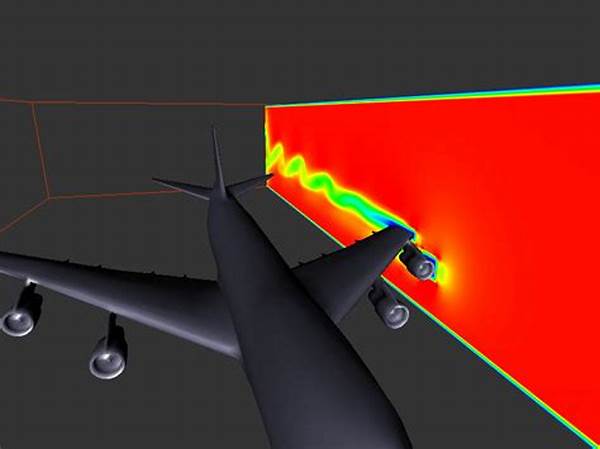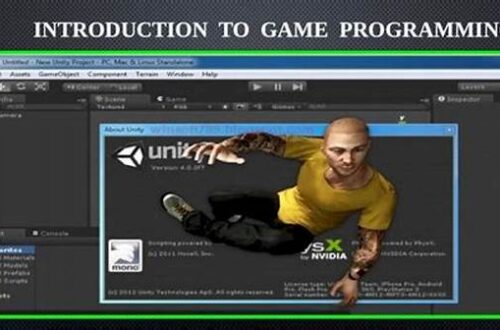Hey there, fellow geometry nerds! Today, we’re diving into the fascinating world of real-time geometry modification techniques. If you have ever wondered how video games and design programs can instantly reshape and tweak 3D objects right before your eyes, then buckle up! Real-time geometry modification is about to become your new favorite topic.
Read Now : Unique Puzzle Creation Platform
Understanding Real-Time Geometry Modification
So, what are real-time geometry modification techniques anyway? Simply put, they are methods that allow computers to alter the shape and structure of 3D objects instantly. This is super important in applications like video gaming, where the environments and characters need to adapt and change in real time, based on player input or other dynamic scenarios.
Take any game you love—maybe something with stunning graphics or dynamic characters—and chances are, it’s using real-time geometry modification techniques. Through algorithms and calculations, your computer can render changes to a character’s expressions, adjust the scenery, or modify object shapes on the fly. It’s like digital clay modeling but way cooler, as it doesn’t require any sculpting by hand.
The magic happens thanks to modern GPUs and clever coding, making these modifications possible without your computer breaking a sweat. Have you ever watched a demo of a game’s physics engine with jaw-dropping real-time destruction or morphing environments? That’s the power of real-time geometry working its magic!
Techniques in Action
1. Vertex Manipulation
Real-time geometry modification techniques often utilize vertex manipulation, which lets you move the vertices of an object. Think of it as grabbing each dot on a net that makes up a 3D model and pulling it to a new position. Cool, right?
2. Subdivision Surfaces
You’ve likely seen smooth, organic models created with subdivision surfaces. This technique refines a mesh by adding more polygons for a smoother look. Real-time geometry modification techniques help perform these operations without causing lag.
3. Boolean Operations
Cutting holes or combining shapes becomes a breeze with Boolean operations. These real-time geometry modification techniques allow for quick and complex changes like creating intricate cutouts or combining multiple objects into one seamlessly.
4. Morph Target Animation
Morph target animation is a favorite in character design. By storing different vertex configurations, real-time geometry modification techniques enable characters to express emotions and actions fluidly by blending these configurations together.
5. Dynamic Tessellation
Dynamic tessellation eases the complexities of low-poly models by subdividing them as needed for detail. Real-time geometry modification techniques use this to ensure that high-quality details are presented only where they’re needed most.
The Impact on Gaming and Design
Real-time geometry modification techniques have ushered in a new era for gaming and digital design, giving creators unprecedented levels of control over their creations. Think about it: would Open World games be the same without the seamless terrain adjustment and realistic character expressions? Nope, not a chance!
Read Now : Real-time Collision Detection Optimization
These techniques aren’t just making your favorite games more immersive; they’re also advancing other fields like architecture and scientific simulations. Architects can now test and modify structures in real-time, ensuring safety and efficacy with each tweak. How awesome is that?
The truth is, these methods are fundamental in breaking the boundaries between technology and creativity. They empower designers to push the limits, explore new aesthetics, and bring bold ideas to life without being held back by static designs. Real-time geometry modification techniques are the unsung heroes behind our digital world’s most vibrant interfaces.
Real-Time Geometry Challenges
Now, you might be thinking, “This all sounds amazing, but it can’t be that easy, right?” And you’d be correct. Implementing real-time geometry modification techniques comes with its set of challenges. For one, striking the right balance between performance and visual quality is like walking a tightrope.
Then there’s the complexity of algorithms. Developing new geometry manipulation methods requires an understanding of mathematics and computer graphics that can seem daunting. It’s a bit like learning a new language, but once you get the hang of it, the possibilities are endless!
Lastly, there’s the need for powerful hardware. As much as we want real-time everything at our fingertips, we need the machinery to back it up. The good news? Technology is progressing at a breakneck speed, and our dream setups are closer than ever.
Exploring Further with Real-Time Modifications
In the end, real-time geometry modification techniques are not just tools but rather opportunities for innovation. Whether you’re a game developer, artist, scientist, or just a curious soul, embracing these techniques opens up a world of possibilities.
Imagine creating an urban landscape for an architectural project where you can adjust park layouts and building designs dynamically, observing both aesthetic and functional impacts instantly. Or perhaps you’re designing the next chart-busting game that everyone will be talking about? Whatever the case, it’s clear that these techniques are paving the way for a future where creativity and technology are truly integrated.
Next time you fire up your favorite game or browse an architectural simulation, spare a thought for the incredible real-time geometry modification techniques working behind the scenes. They might not be visible to the untrained eye, but their contribution to bringing our imaginations to life is invaluable.
Conclusion
To sum it all up, real-time geometry modification techniques are the backbone of modern digital design, offering flexibility, creativity, and an interactive experience like never before. They’re the magic behind every astonishing visual you encounter, whether it’s in video games, CGI films, or architectural simulators.
The journey of understanding and mastering these techniques may seem complex, but that’s part of what makes it so thrilling. As technology continues to evolve, so too will the capabilities of real-time geometry modification techniques, promising even more exciting developments in the future. For now, let’s appreciate the brilliance and artistry they bring to our digital landscapes.
And that’s a wrap, folks! I hope you enjoyed this journey into the world of real-time geometry modification techniques. Who knows, maybe you’ll be inspired to create something amazing using these techniques. Happy creating!





